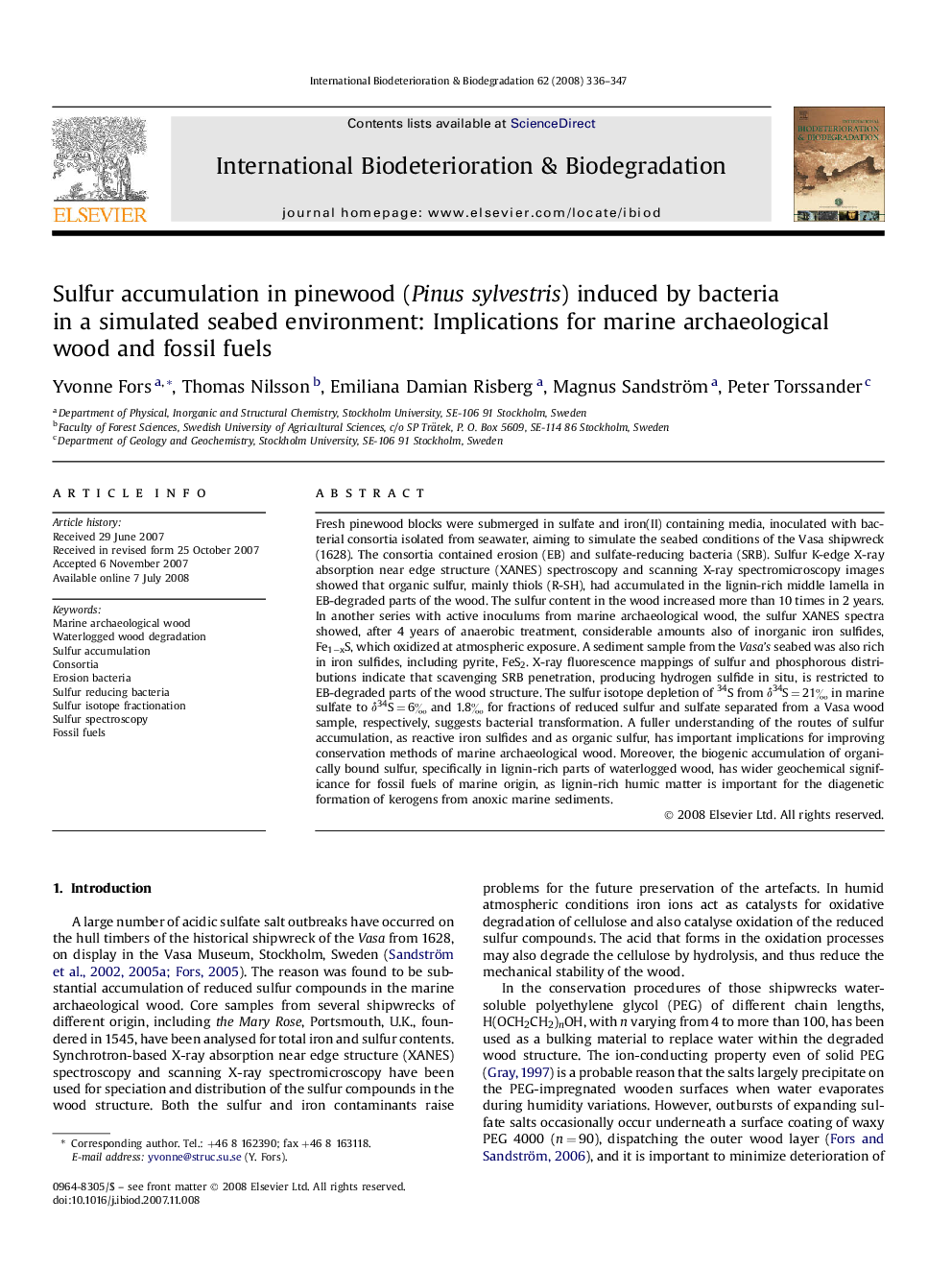| کد مقاله | کد نشریه | سال انتشار | مقاله انگلیسی | نسخه تمام متن |
|---|---|---|---|---|
| 4365751 | 1301777 | 2008 | 12 صفحه PDF | دانلود رایگان |

Fresh pinewood blocks were submerged in sulfate and iron(II) containing media, inoculated with bacterial consortia isolated from seawater, aiming to simulate the seabed conditions of the Vasa shipwreck (1628). The consortia contained erosion (EB) and sulfate-reducing bacteria (SRB). Sulfur K-edge X-ray absorption near edge structure (XANES) spectroscopy and scanning X-ray spectromicroscopy images showed that organic sulfur, mainly thiols (R-SH), had accumulated in the lignin-rich middle lamella in EB-degraded parts of the wood. The sulfur content in the wood increased more than 10 times in 2 years. In another series with active inoculums from marine archaeological wood, the sulfur XANES spectra showed, after 4 years of anaerobic treatment, considerable amounts also of inorganic iron sulfides, Fe1−xS, which oxidized at atmospheric exposure. A sediment sample from the Vasa's seabed was also rich in iron sulfides, including pyrite, FeS2. X-ray fluorescence mappings of sulfur and phosphorous distributions indicate that scavenging SRB penetration, producing hydrogen sulfide in situ, is restricted to EB-degraded parts of the wood structure. The sulfur isotope depletion of 34S from δ34S = 21‰ in marine sulfate to δ34S = 6‰ and 1.8‰ for fractions of reduced sulfur and sulfate separated from a Vasa wood sample, respectively, suggests bacterial transformation. A fuller understanding of the routes of sulfur accumulation, as reactive iron sulfides and as organic sulfur, has important implications for improving conservation methods of marine archaeological wood. Moreover, the biogenic accumulation of organically bound sulfur, specifically in lignin-rich parts of waterlogged wood, has wider geochemical significance for fossil fuels of marine origin, as lignin-rich humic matter is important for the diagenetic formation of kerogens from anoxic marine sediments.
Journal: International Biodeterioration & Biodegradation - Volume 62, Issue 4, December 2008, Pages 336–347